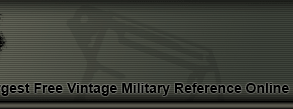WWII German Luftwaffe Officer's 1st Model Dagger -
The Luftwaffe instituted the use of a dagger in 1934. The dagger was designed based on an earlier piece used by the DLV.
This dagger was known as the First model. in 1937 a second dagger was introduced as a replacement. This was known
as the Second mdoel.
The biggest changes between the first model and the second model were the pommel and the hand guard. A detailed account
of the construction of the First Model dagger follows:
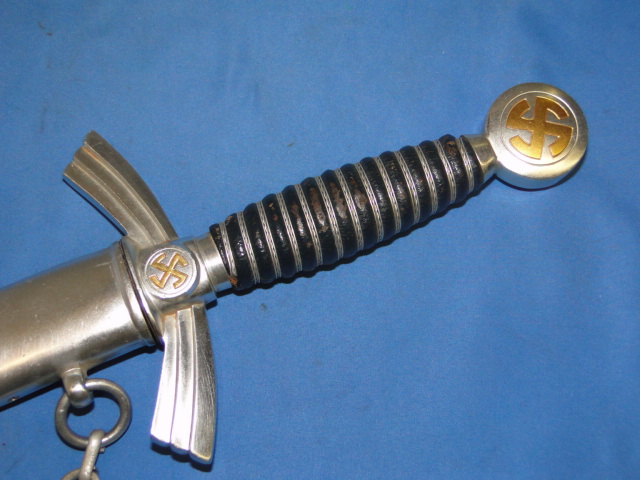
The design of the dagger consists of a large circular pommel with a guilded swirl swastika located in each side.
The handle is covered with dark blue corynthian leather and wrapped with silver wire. The cross guard has three
metal forms at each side curving downward. The center has a swastika of similar design as the one found in the pommel.
The scabbard is of metal construction. It is wrapped with dark blue leather. It has three metal fittings; One at the
throat, one at mid-point and one at the tip. A suspension ring is secured to the throat and mid-sections. A chain
is permanently attached at these points. The chanis are attached to a metal spring loaded clip at the other end.
The Luftwaffe First Model dagger was manufactured in two types of materials: Aluminum and steel. The dagger featured
on this page is the Aluminum version. Over the years this version has proven to better whitstand the rigors of time.
The amount of wear and tarnishing on the material is almost none-existant.

The blade is of stilleto design. Double edge construction. Not sharpened as it was not necessary since the dagger
was not meant for use in combat. The manufacturer's logo is seen on one side, at the base. The dagger was
produced by E. & F. Horster of Solingen.

|
This page is a recognition and identification guide for German bayonets. Multiple
detailed photos of a specific sample are provided. Descriptions point out specific
points that should be noted.
One of the most commonly asked questions is "How much is my German bayonet worth?".
A price guide is included here to address this question. The value of the Nazi bayonets is
reviewed over a period of several years. A trend can be observed. The present worth
of the police sword in the collector's market is illustrated.
This service is provided free of charge to the visitor/enthusiast courtesy of
MilitaryItems.com,
a company dedicated
to the preservation of military history and to providing quality military antiques and
collectibles to museums, institutions and the general public.
|
|

The dagger featured here has a "D" ring with a brown leather strap attached to it. This is how the dagger
was attached to the uniform of the soldier.

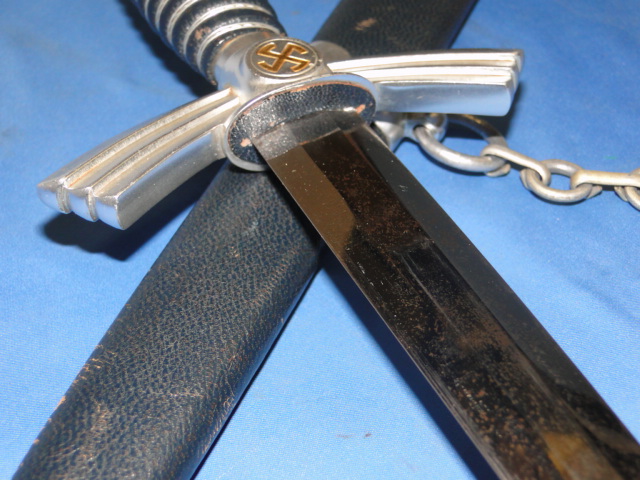

This is a very elegant looking dagger. A
Luftwaffe sword was produced. Its shape is very similar to the
first model dagger.
The Frist model dagger is longer in length than all the other daggers from the military services of the Third Reich.
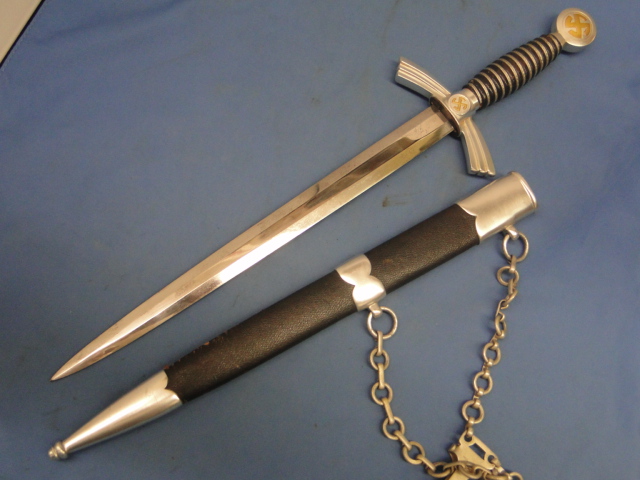
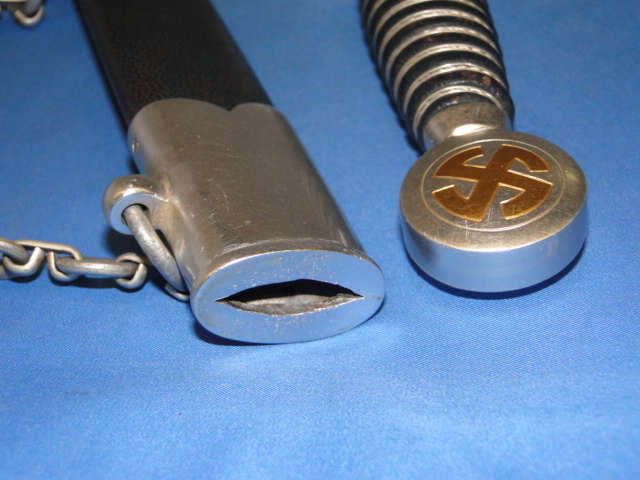
Many German edge weapons are currently
reproduced.
It is becoming more difficult to be able to tell the fake ones from the real ones because
the quality of the reproductions is improving. The collector must become familiarized with
the construction style and materials employed in the manufacturing of this item.
Attention to the details is critical in order to be able to determine the authenticity of
the collectible.
If you have an interest is seeing other edge weapons of the Third Reich, you can do so by going
to our
WWII German daggers and Swords
identification guide, Where we cover blades from the Heer (Army), Navy (Kriegsmarine), Air Force
(Luftwaffe) and other organizations.
|


